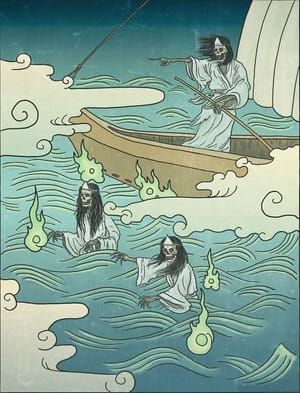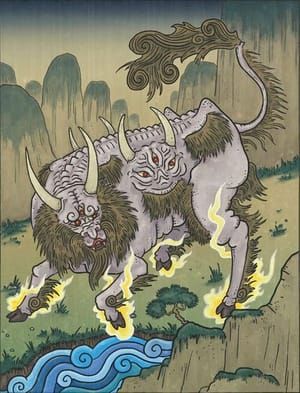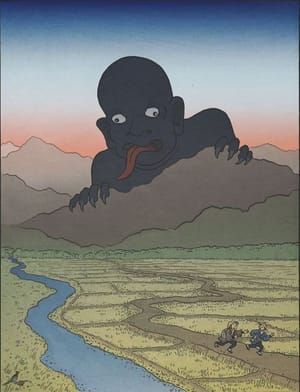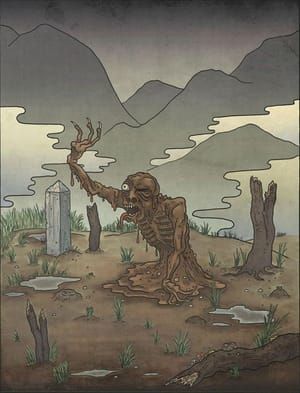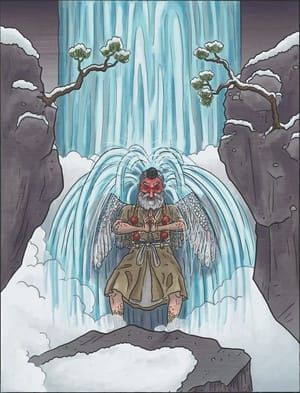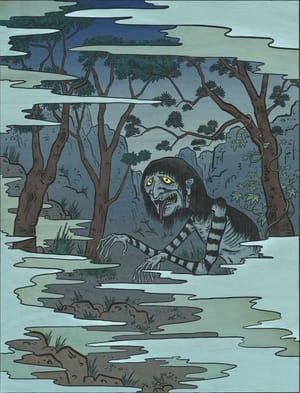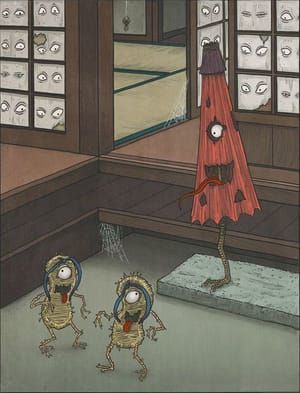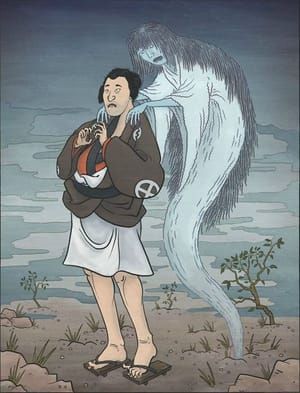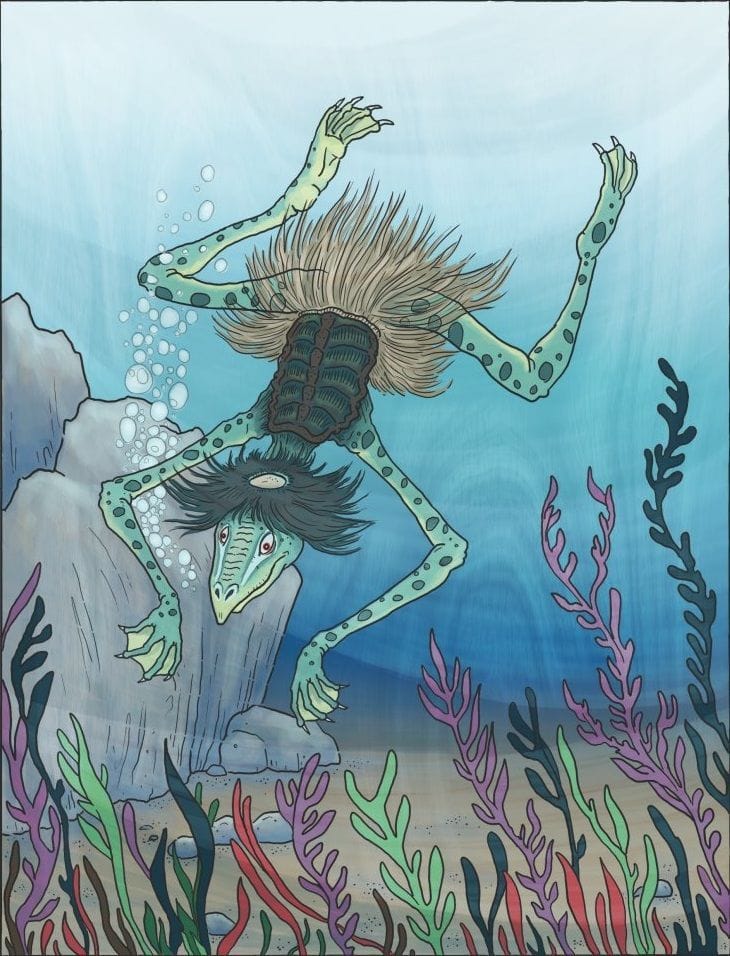

Garappa, 2013
Matthew Meyer
ガラッパ
Garappa are river spirits found on the islands of Kyushu in southern Japan. They are close relatives of kappa and resemble them in many ways, thus the two are often confused with each other. There are a number of important differences. Physically, garappa are almost identical to kappa, the most notable difference being that a garappa’s limbs are much longer than those of a kappa. When garappa sit down their knees rise high above their heads, while kappa’s knees do not. Because of these longer limbs, garappa are taller than kappa when standing upright. Garappa also have slightly longer and more streamlined faces.
Garappa are much more shy and elusive than kappa, and tend to avoid populated areas. Instead, they wander back and forth between the rivers and mountains. They tend to live in smaller groups, or by themselves. Because of their shyness, garappa are more often heard than seen. They have two distinctive calls: “hyo– hyo–,” and, “foon-foon-foon.”
While garappa encounters are much rarer than kappa, they share with kappa a similar relationship with humankind. They are extremely fond of pranks and mischief, and love to surprise people on mountain paths, or trick travelers into losing their way. Garappa are physically stronger than a human, and easily capable of overpowering grown men larger than them. They are extremely fond of sumo wrestling, at which they are highly skilled. Garappa are also very sexually aggressive and frequently assault and rape women.
Despite their reputation as tricksters, garappa are absolutely dedicated to keeping their word. When captured or bested in contest by humans, they are usually forced by their victors to promise to stop drowning people, playing pranks, making noises in the woods, or similar concessions. Over the centuries, Shinto sects which revere garappa have worked to earn promises from them to cease doing evil; as a result garappa attacks have become less and less common over time. Garappa also occasionally serve humans by catching fish or planting rice fields, and they are credited with teaching the ancient people of Kyushu the art of making poultices.
Matthew Meyer
artistArthur
Wait what?


